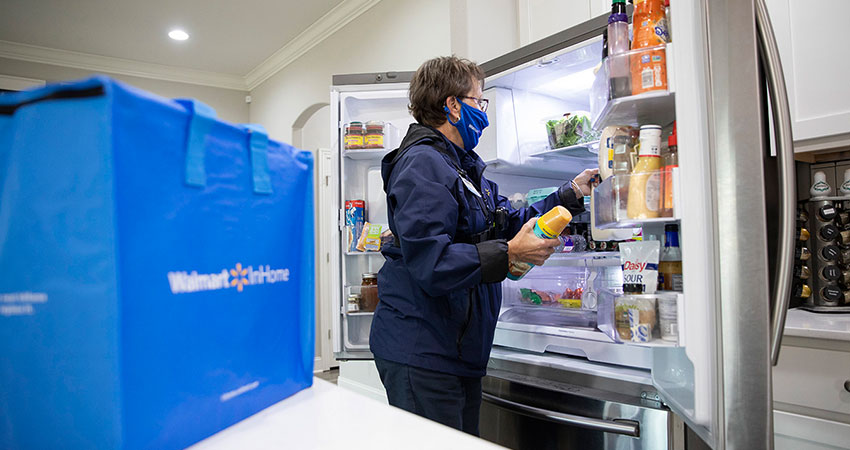In another front of their ever-escalating war, Walmart is quintupling its in-home grocery delivery service as Amazon continues to step it up as well, both doubling down despite concerns that linger among consumers related to COVID-19 and the omicron variant spike.
Walmart had pulled back on its InHome offering in early 2020 as the pandemic broke out, but jumpstarted it in the spring of 2021 on the heels of Amazon getting back into the game.
InHome, currently available to 6 million U.S. households, is expanding this year 30 million households. To get there, Walmart plans to hire more than 3,000 drivers and build out a fleet of all-electric delivery vans. The retailer says it has 1,396 EV charging stations at Walmart stores and Sam’s Club locations in 41 states.
“We’ve been operating InHome in select markets over the last two years and have found it is a perfect solution for customers who want to live their lives without worrying about making it to the store or being home to accept a delivery,” said Tom Ward, senior vice president, last mile at Walmart U.S. in a release. “Identifying ways to help our customers save time and money is our purpose, and nothing showcases that better than InHome delivery, which is why we’re excited to bring the convenience of InHome to even more customers in 2022.”
Walmart launched InHome in October 2019, starting in Pittsburgh, Vero Beach, FL and Kansas City. Amazon began offering its in-home delivery service in 2018, as Walmart began trialing it.
Delivery associates use smart entry technology and a proprietary, wearable camera to access customer’s homes, allowing them to both control access and view deliveries remotely to address security concerns.
The service is $19.95 per month or $148 per year, with tips built into the membership price. Associates are granted access via an existing smart lock, a garage keypad or by purchasing a smart lock from InHome for $49.95.
MCM’s Take: It will be interesting to see what kind of adoption Walmart and Amazon see from this service. While no doubt highly convenient, and convenience sells, it’s hard to imagine masses of consumers are cool with the idea of having a stranger – vetted and ID’d though they are – enter their home to put food in their fridge in the midst of a pandemic case spike.

